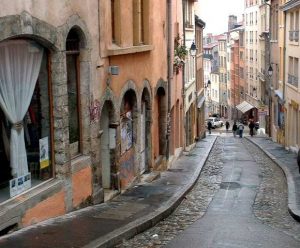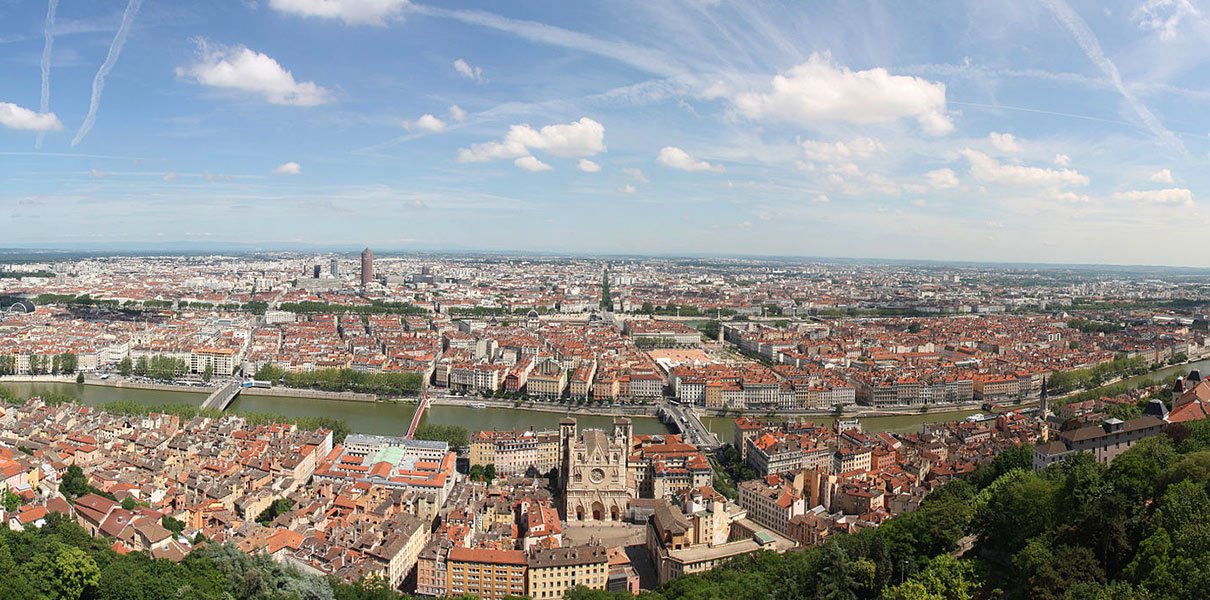 Lyon forms the second-largest metropolitan area in France after Paris. The city is known for its historical and architectural landmarks and is a UNESCO World Heritage Site. Travellers gush over the superb gastronomy, spectacular architecture, and unique natural setting. Lyon was historically known as an important area for the production and weaving of silk and in modern times has developed a reputation as the capital of gastronomy in France. It has a significant role in the history of cinema due to Auguste and Louis Lumière. The local professional football team, Olympique Lyonnais, has increased the profile of Lyon internationally through participation in European football championships.
Lyon forms the second-largest metropolitan area in France after Paris. The city is known for its historical and architectural landmarks and is a UNESCO World Heritage Site. Travellers gush over the superb gastronomy, spectacular architecture, and unique natural setting. Lyon was historically known as an important area for the production and weaving of silk and in modern times has developed a reputation as the capital of gastronomy in France. It has a significant role in the history of cinema due to Auguste and Louis Lumière. The local professional football team, Olympique Lyonnais, has increased the profile of Lyon internationally through participation in European football championships.
La Centre-Ville – The Downtown Stretch
Like any large metropolitan area, Lyon has a thriving downtown scene and its heart is the Rue de la République, a long stretch of cobblestone that’s free of cars and full of shops, boutiques, and outdoor cafés. From here you can easily get to popular attractions such as the opera house, several impressive fountains, and the quais of the Rhône.
Place Bellecour
This square is now in the 2nd arrondissement of Lyon, between the Saône and the Rhône, and forms the focal centre point of the city. It also links the major shopping streets, as well as hosting the Lyon tourist office, and the Lyon central post office. From Place Bellecour start three major streets of the Presqu’île, including two pedestrian ones : the rue de la République, leading to the Hôtel de Ville and the Opera Nouvel, the Rue Victor Hugo, which leads to Perrache, and the Rue du Président Édouard Herriot, with a concentration of luxury shops and leading to the Place des Terreaux. The quarter of Vieux Lyon and the Lyon Cathedral are in front over the Saone. The Place Bellecour is the kilometer 0 of Lyon: all distances are counted from this point.
Parc de la Tête d’Or
Parc de la Tête d’Or (literally, Park of the Golden Head), in central Lyon, is an urban park in France, with 117 hectares. Located in the 6th arrondissement, it features a large lake on which boating takes place during the summer months.It is a frequent destination for joggers and cyclists. At the northern end of the park, there is a small zoo, with giraffes, elephants, tigers and other animals. There is also sporting equipment, such as a velodrome, boules court, mini-golf, horse riding, and even a miniature train. The park also contains four rose gardens, huge greenhouses and a botanical garden.The main entrance, at the southeast corner, is guarded by an enormous wrought iron gate known as the Porte des enfants du Rhône (Gate of the children of the Rhone).
Vieux Lyon
In 1964, Vieux Lyon became the first protected historic district in France. It is one of the largest Renaissance quarters in Europe and was named a UNESCO World Heritage site in 1998. The Vieux Lyon quarter spreads across the Fourvière hillside and is organized around three religious monuments: Saint Jean cathedral, the splendid medieval church of Saint Paul, Saint Georges church. The old medieval part of the city has narrow cobblestone streets that pull travelers back a few centuries. It mixes stone buildings as well as Renaissance-style architecture, complete with soaring towers, spiralling staircases, and buildings painted in shades of red and yellow.
Not to be missed are the traboules, semi-secret passageways that run underneath and between buildings and had more than one use throughout Lyon’s history. For a more modern touch, visitors can stop in one of the many pubs located in Vieux Lyon that usually have English-speaking bartenders and serve both exquisite French wine as well as imported beers.
Croix-Rousse: A Bohemian Neighborhood
 This unique Lyonnais neighborhood still portrays influence from the days of Bohemia. Thrift shops and boutiques that offer international goods line the streets, along with awesome graffiti art that prides itself in its boldness. Also available to travelers are food and trinket shops to die for. Try a box of macarons, a yummy French treat, from a brightly painted sweet shop. Buy a vintage scarf to take home as a unique souvenir. Like Vieux Lyon, this neighborhood has its own special character that will be sure to please any culture-hungry traveler. Make sure to set aside plenty of time to roam through all the nooks and crannies.
This unique Lyonnais neighborhood still portrays influence from the days of Bohemia. Thrift shops and boutiques that offer international goods line the streets, along with awesome graffiti art that prides itself in its boldness. Also available to travelers are food and trinket shops to die for. Try a box of macarons, a yummy French treat, from a brightly painted sweet shop. Buy a vintage scarf to take home as a unique souvenir. Like Vieux Lyon, this neighborhood has its own special character that will be sure to please any culture-hungry traveler. Make sure to set aside plenty of time to roam through all the nooks and crannies.
Fete de la Musique
Completely different from a music festival, the Fête de la Musique is above all a free popular fête, open to any participant (amateur or professional musicians) who wants to perform in it. This Music day allows the expression of all styles of music in a cheerful atmosphere. It aims at a large audience, working to popularise musical practice for young and not so young people from all social backgrounds. It gives an opportunity to communicate and share a very special moment through music. It takes place every 21st June, the day of the summer solstice in the northern hemisphere.
Lyon’s Church
Like many medieval European cities, Lyon is home to an abundance of awe-inspiring churches. The two most famous are:
- Basilica Notre-Dame de Fourvière
- St.-Jean Cathedral
The Gallo-Roman Museum and Ruins
At the museum that sits just above Vieux Lyon and not far from the Basilica, the adventurer is free to walk through the displays at any pace, viewing artifacts and history from the days when the Lyonnais called themselves Roman. You’ll find the usual cracked bowls, old mosaics, and Roman artwork as you spiral down the museum from top to bottom.
While some may wish to skip the history lesson (though for many the artifacts still hold the ability to impress), the almost fully-intact remains of a Roman theater outside is worth the visit.
Lyon‘s Trompe L’oeil – Public Art
Lyon is also the French capital of “trompe l’œil”-walls, a very ancient tradition. Many are to be seen everywhere around the city. Each magnificent piece is intricately painted to look astonishingly real, and most are life-sized. While some are in plain view along the more populated streets, a large number of them are located unsuspectingly in smaller alleyways, behind buildings, and in other out-of-view areas. This old tradition is now expending in a contemporary expression. With over 150 of these trompe l’oeil pieces, visitors will want to stop by the tourism office to pick up a guide and plan to include a few along the way of each daily excursion around the city.
Other Places to Visit in Lyon
- Place des Terreaux
- Musée des Beaux-Arts
- Passage de l’Argue

